Ocean Safety Tips and FAQ
The conditions of the beaches of Nosara can vary dramatically day to day. Through these safety tips and FAQs. empower yourself with ocean safety and awareness knowledge to become a responsible beachgoer, no matter the day.
Rip Currents
Rip currents are very common in Playa Guiones and Playa Pelada and are the number one cause of aquatic accidents in the area.
What is a rip current?
Rip currents are channelized currents of water flowing away from shore at surf beaches. When waves travel from deep to shallow water, they break near the shoreline and create currents that are shaped by the ocean floor (sandbars), at times producing rip currents that take the water back from the shore towards the ocean. Waves interacting with each other can also cause short-lived rip currents.
Rip currents pull people away from shore. Rip current speeds can vary from moment to moment and can quickly increase to become dangerous to anyone entering the surf. Rip currents can sweep even the strongest swimmer away from shore. Rip currents account for over 80% of rescues performed by surf beach lifeguards.
How do I identify a rip current?
Rip currents are often difficult to see, but you can spot them by looking for:
◆ A narrow gap of darker, seemingly calmer water between areas of breaking waves and whitewater.
◆ A channel of churning, choppy water.
◆ A difference in water color.
◆ A line of foam, seaweed or debris moving seaward.
What do I do if I am caught in a rip current?
◆ Relax, rip currents don't pull you under.
◆ Don't swim against the current and save your energy.
◆ You may be able to escape by swimming out of the current in a direction following the shoreline, or toward breaking waves, then at an angle toward the beach.
◆ You may be able to escape by floating or treading water if the current circulates back toward shore.
◆ If you feel you will be unable to reach shore, draw attention to yourself. If you need help, yell and wave for assistance.
What do I do if someone else is caught in a rip current?
Don't become a victim while trying to help someone else! Many people have died trying to rescue rip current victims.
◆ Get help from a lifeguard.
◆ If a lifeguard is not present, call 9-1-1 or the Nosara Fire Department, then try to direct the victim to swim following the shoreline to escape.
◆ If possible, throw the rip current victim something that floats.
◆ Never enter the water without a flotation device.
Flags
The beach flags provide general warnings about overall swim and surf conditions and advise the public on hazardous areas.
Playa Guiones and Playa Pelada are not recommended as swimming beaches, and for this reason one will see both permanent and varying flags.
There will always be yellow flags flying at each beach entrance, indicating swimming past the waist is not safe, and a red flag south of Bakers Beach, where there is a strong rip current and undertow. The flags flown at all other points on the beach will vary on weather, ocean conditions and tides.
What do the colors of the flags mean?
Yellow flag is medium hazard meaning moderate surf and/or currents. Danger may increase greatly depending on the tide and/or location. If one is entering the water without a board, do not go past waist high water.
Red flag is a high hazard meaning high surf and/or strong currents. Dangerous Ocean Conditions. Persistent large waves, strong long-shore currents, strong rip currents. No swimmers and only advanced surfers can enter the water.
Double red flags means water is closed to the public.
Purple flag means dangerous marine life is spotted.
Emergency Protocol
What do I do in case of an emergency?
Unlike most places in North America and Europe, Nosara does not have a typical first responder unit, and therefore it is recommended that you call both 911 for the Cruz Roja and the local first responder unit, the Bomberos de Nosara.
In case of an emergency, do as follows:
Call 911
Call The Bomberos de Nosara +506 2682-4911
In case of need for immediate medical support call Paradise Medical: +506 26821212

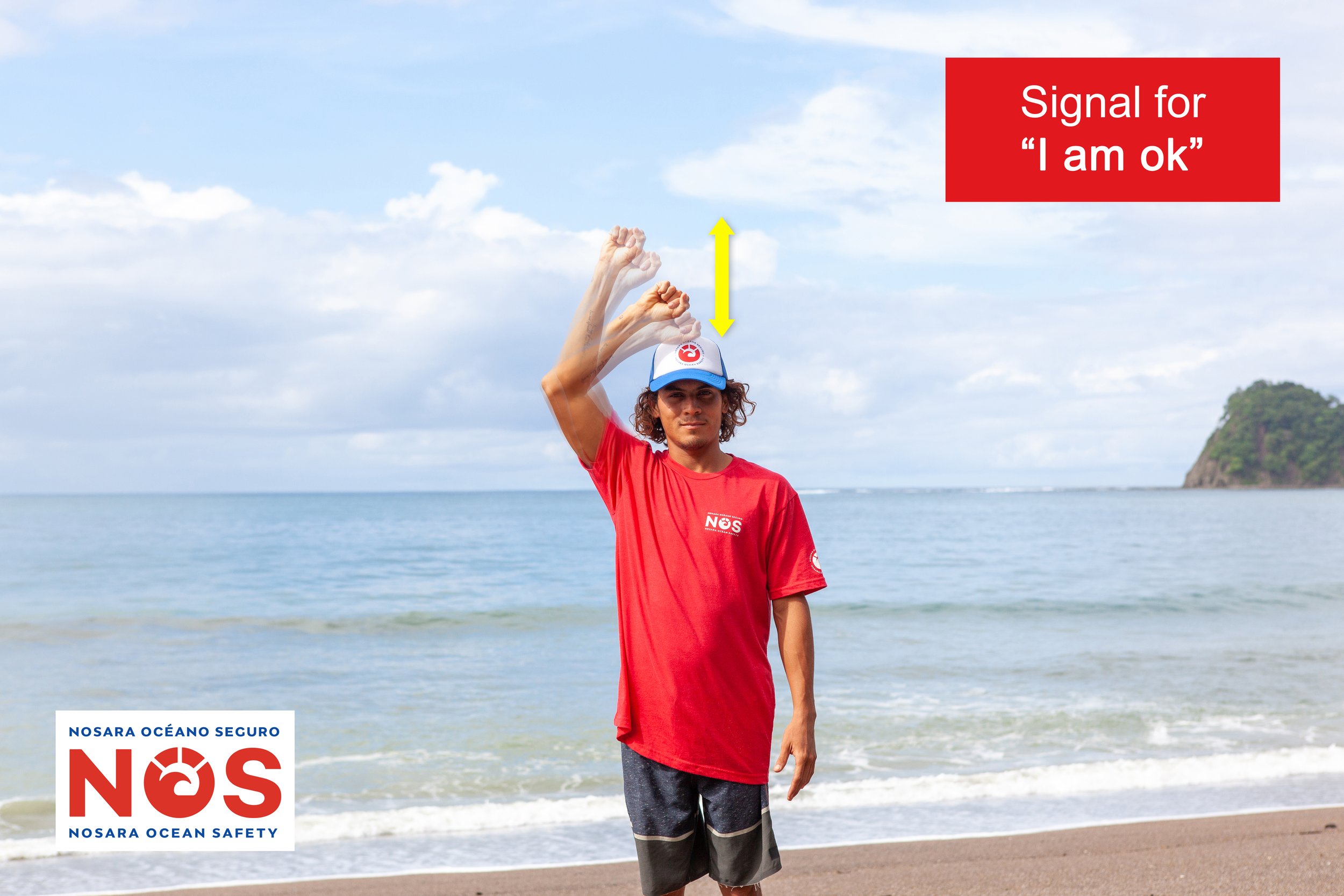
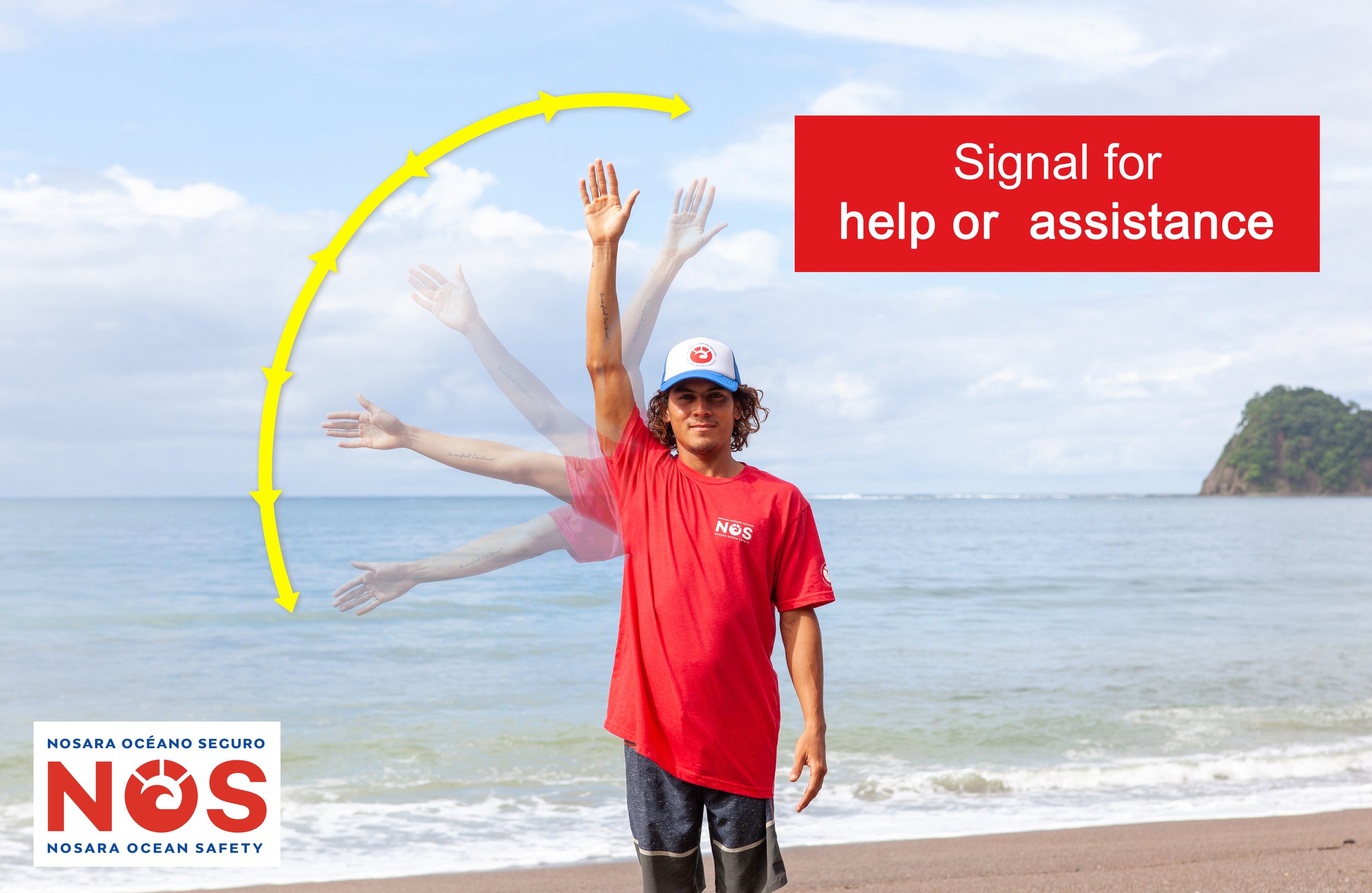
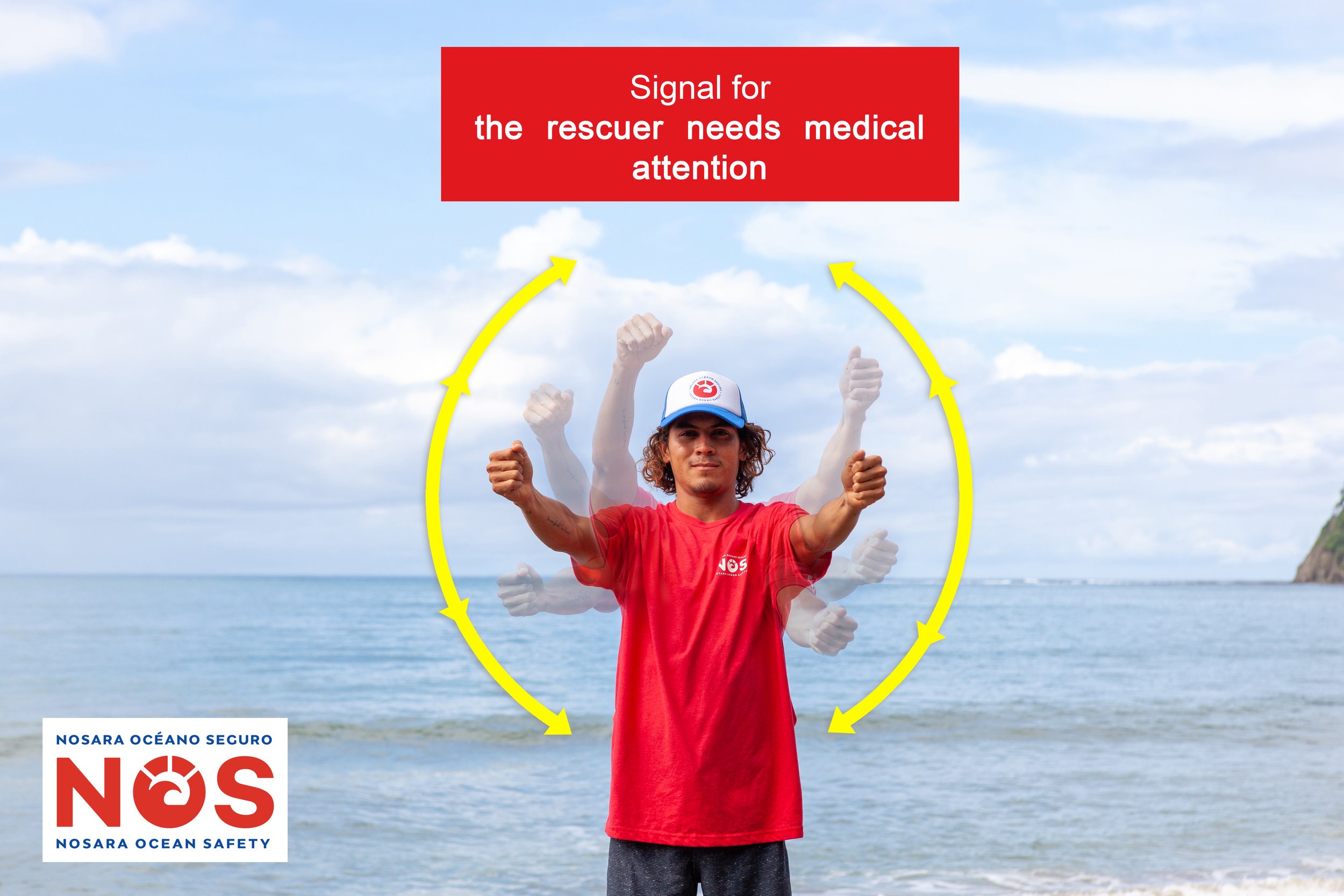
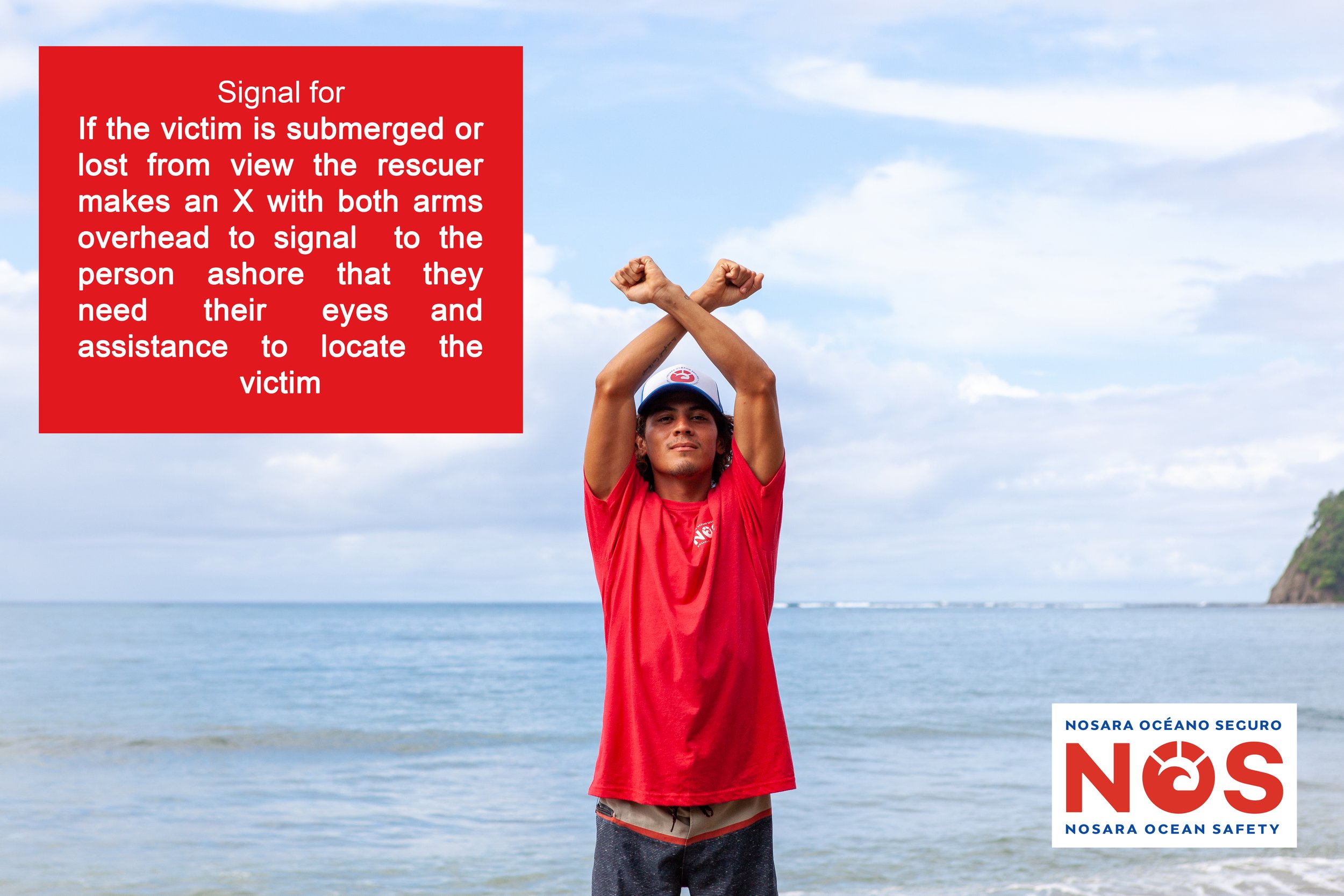
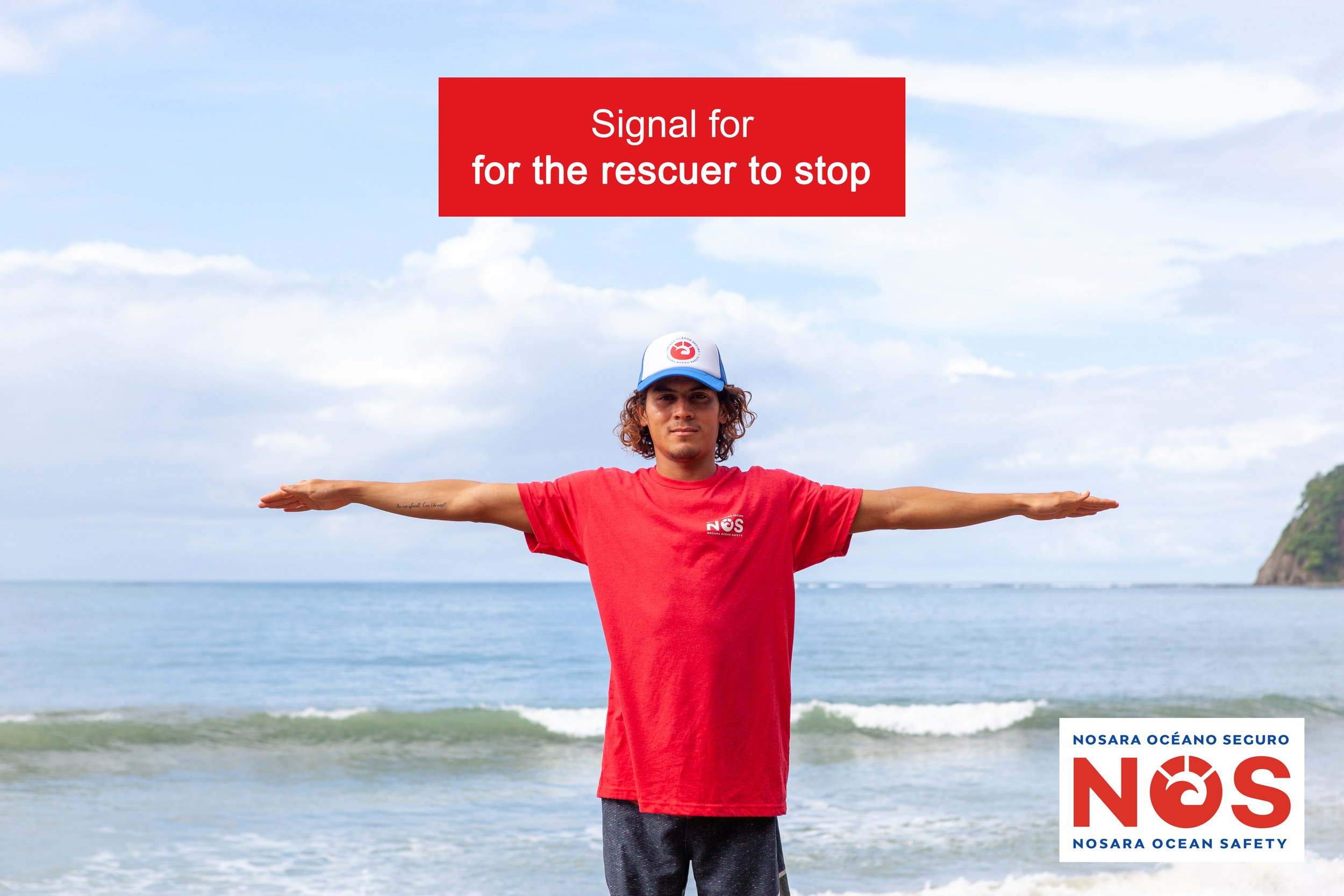
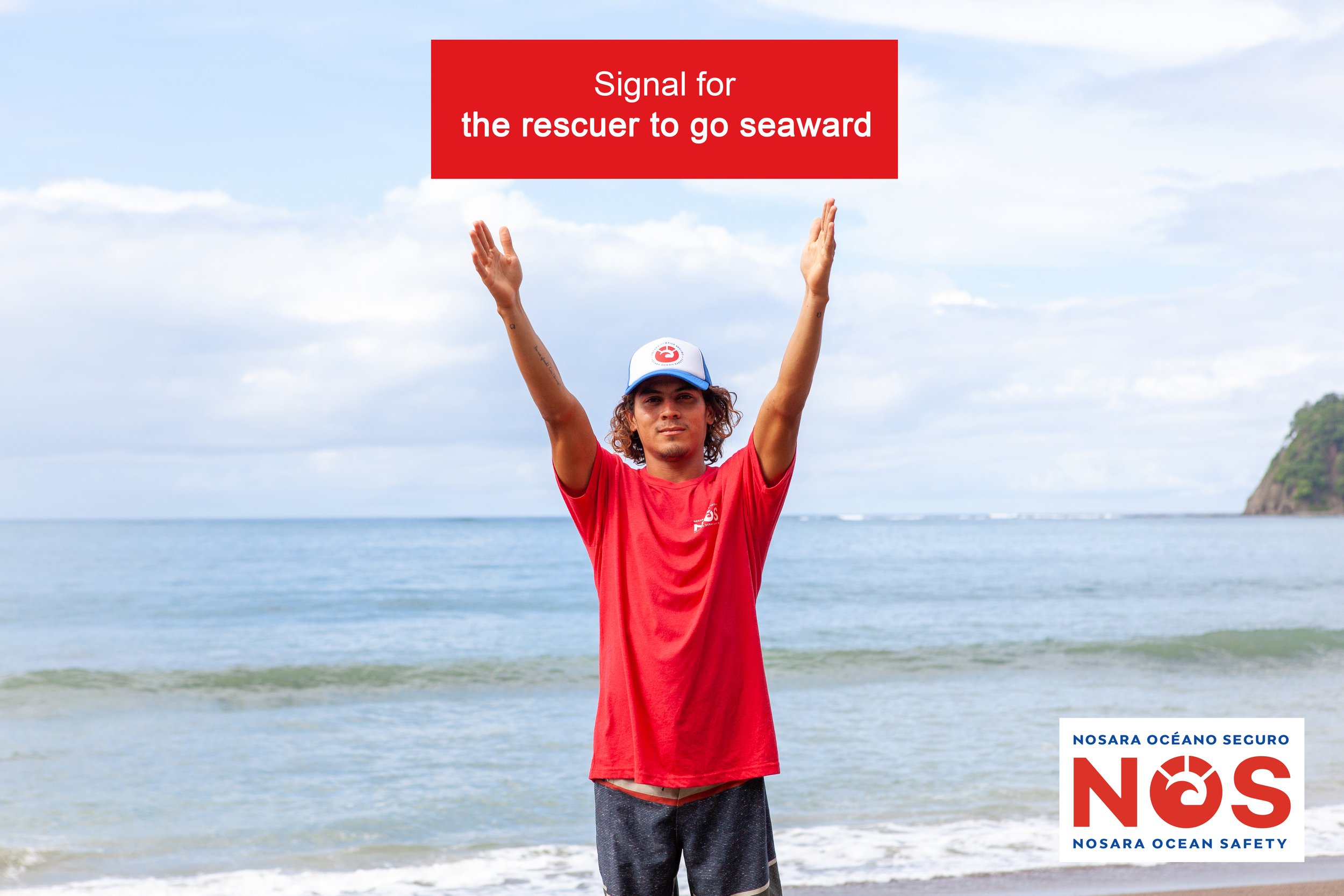
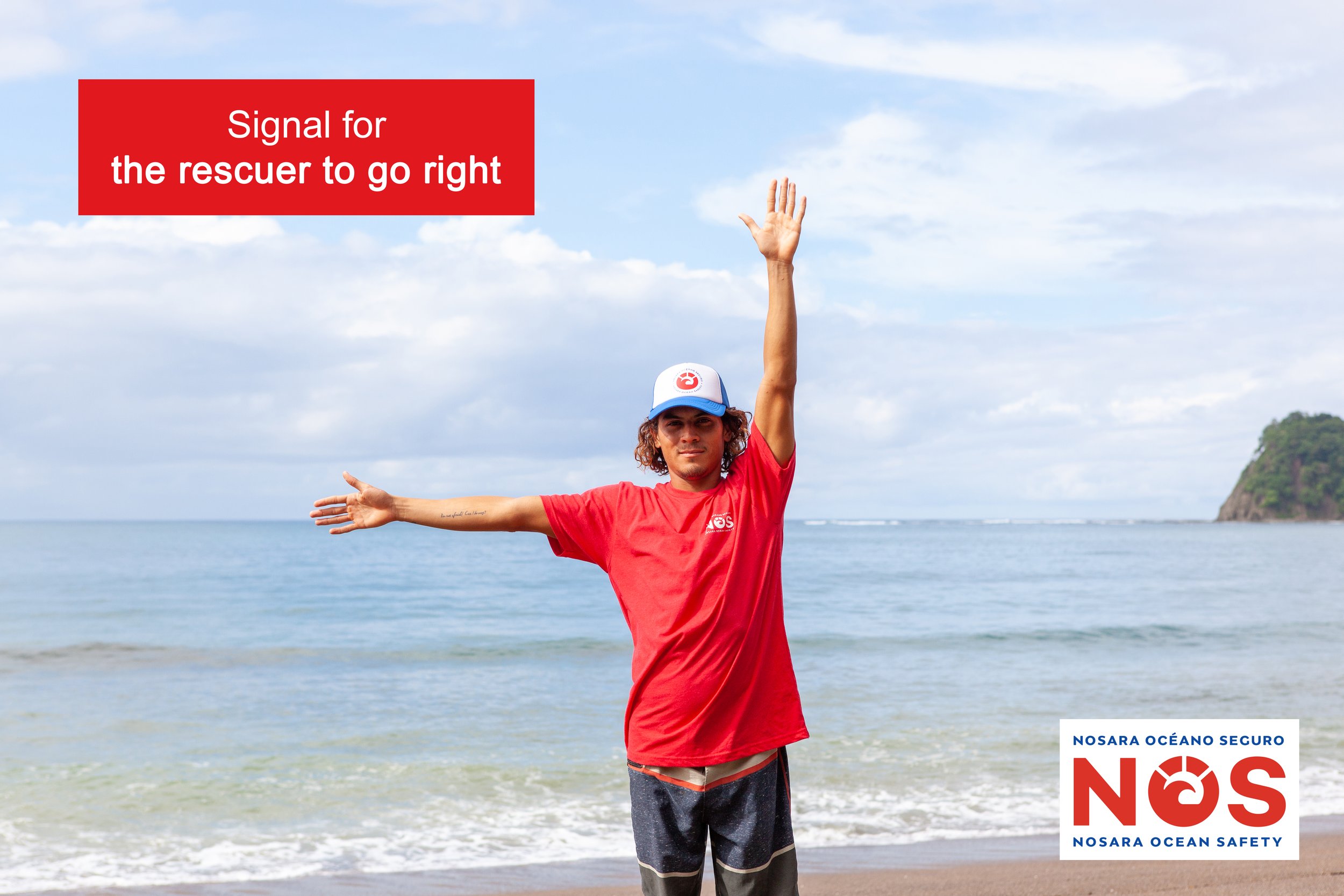

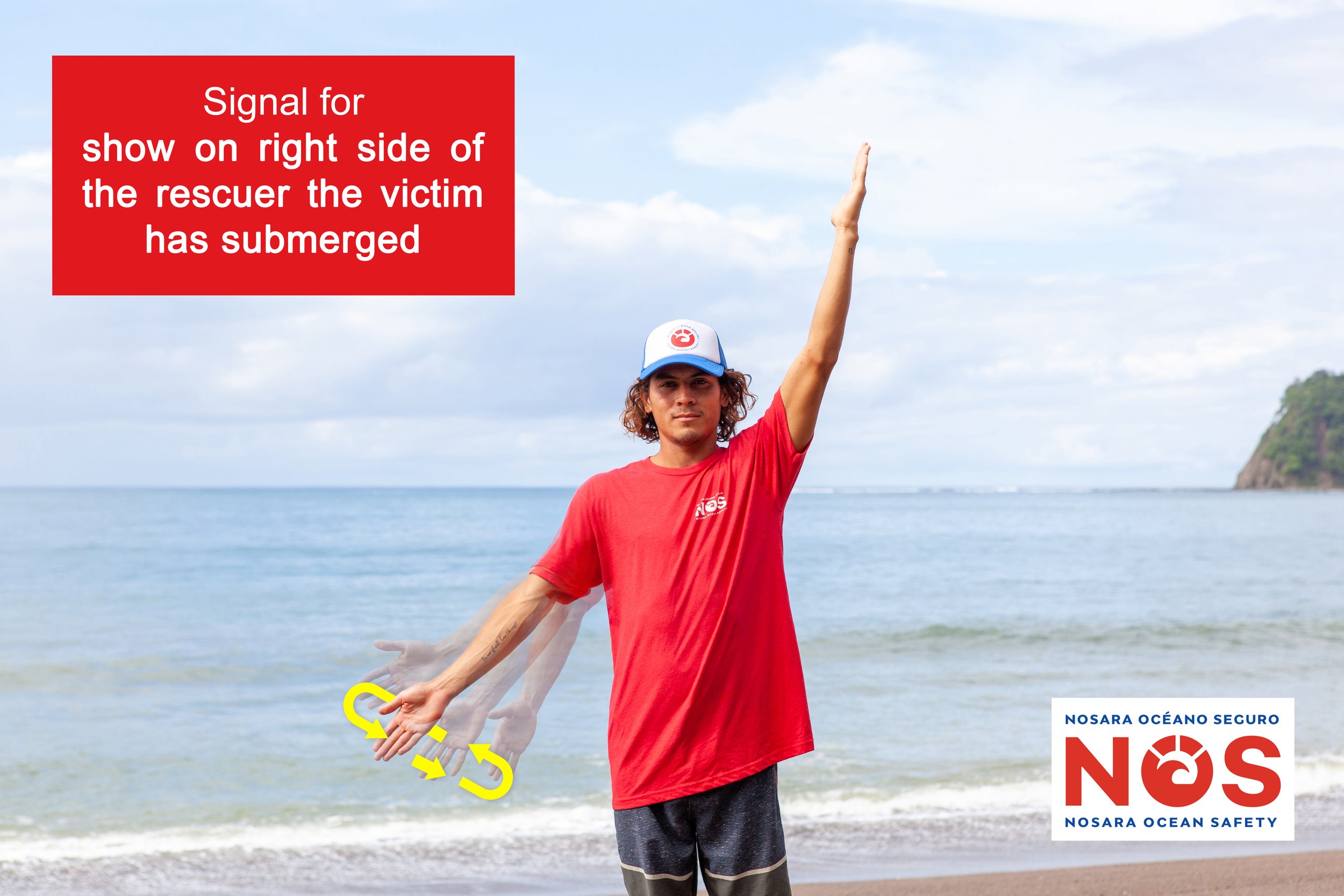
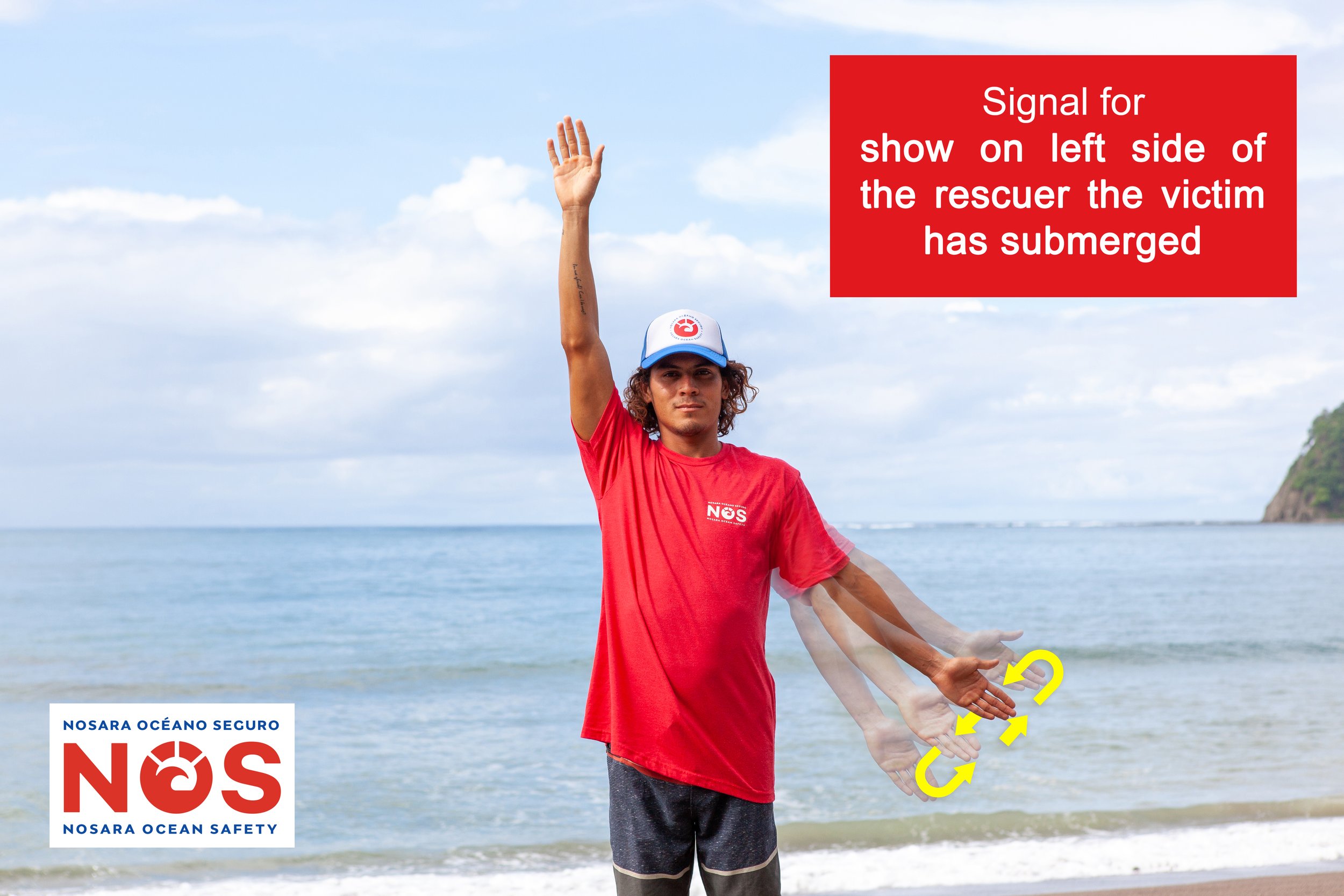
Best practices for being a responsible beachgoer.
These guidelines are always good to have in mind for any beach you go to! Click here for guidelines in English. Click here for guidelines in Spanish.
Before arriving to the beach
Surf Forecast
Before leaving for the beach, it never hurts to check the surf forecast (even if you’re only going to swim) on apps like Magic Seaweed or Surfline. These apps can tell us how big the waves are, the time of the tides (rip currents are strongest during high tide and when the tide is going out), how many swells are in the water and how many seconds between periods. For help reading a surf forecast, stay tuned from NOS’s upcoming educational resources that will be accessible for the community.
Upon arrival to the beach
Check your surroundings
When you arrive to the beach, always be aware of your surroundings. For instance, taking time to notice:
Are there are signs indicating that the area can be dangerous for swimming?
Are there any flags up or lifeguards patrolling?
Are there other people are in the water, swimmers and/or surfers ? And if so, which areas?
Take a few minutes (up to 15-20 sometimes) before getting in the water to see if the waves are big. Sometimes we arrive to the beach and the waves aren’t very big, but after 10 minutes a huge set can come through.
You can always ask locals how the conditions
While at the beach
Children should always be supervised.
Never go in past your waist, unless you are extremely confident that the water is safe.
Responsibility for others
Not only do we need to be looking out for ourselves, but as a community we have a responsibility to help each other. If you see someone entering a potentially dangerous situation, we want our community to feel empowered to let them know that the conditions are not safe in that moment.
FAQ
-
What do I do if my leash breaks?
It’s always most important to stay calm and conserve your energy, the waves will eventually bring you back to shore. By staying calm, you can assess the situation and you can signal for help by waving your arms or by yelling for help. Look for other surfers that can come help take you to shore.
-
What do I do if a Jellyfish stings me?
Do not touch the sting site. Immediately seek medical attention for appropriate treatment. Usually, treatment for a tropical jellyfish sting is a mixture of vinegar and saline water which helps alleviate the pain. Vinegar inactivates the tropical jelly’s capsules so they can not fire. Note that remedies like alcohol, baking soda or pee will trigger the capsules to fire more venom.
Once you have gotten rid of the jellyfish tentacles, apply heat to the injury. It might seem like you want ice to cool off the burning area, but heat actually reduces the venom’s activity, so you will end up with less damage in the long run.
Please remember that one who is allergic to bees, wasps, and/or ants is possibly allergic to jellyfish as well.
Always seek medical advice if in doubt or the sting becomes infected.



